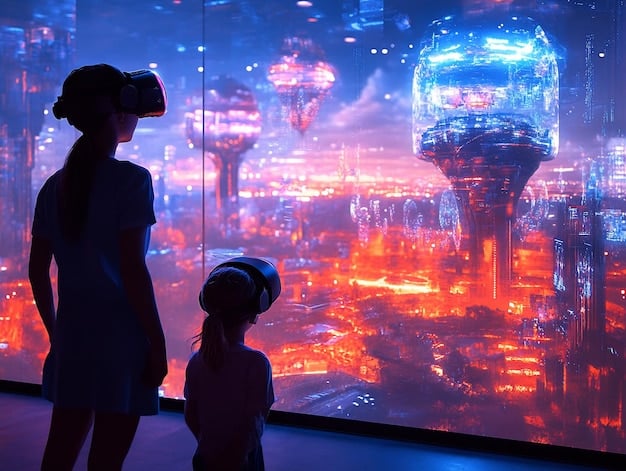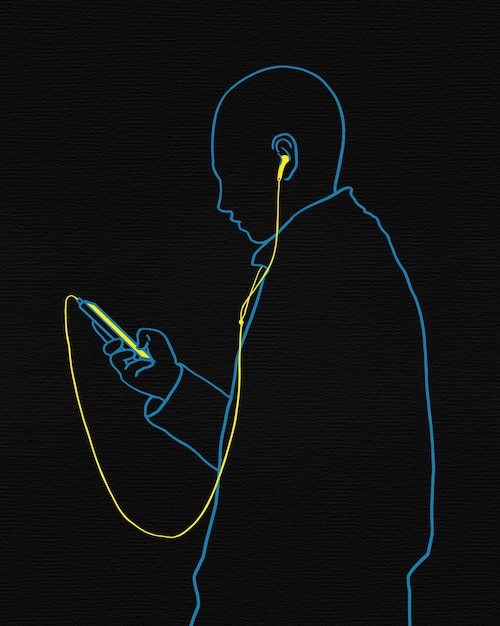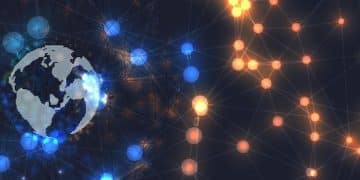AI in Entertainment: Ethics & Future Potential

The emergence of artificial intelligence within the entertainment industry presents a complex ethical landscape, balancing unprecedented creative and operational potential with significant challenges concerning intellectual property, artistic integrity, and job displacement, necessitating careful navigation for a responsible future.
The rapid integration of artificial intelligence into creative sectors is reshaping how we conceive, produce, and consume media. Nowhere is this transformation more evident than in the entertainment industry, where AI promises to unlock unprecedented levels of creativity and efficiency. Yet, beneath the shimmering veneer of innovation lies a multifaceted ethical dilemma. This article delves into The Ethics of AI in Entertainment: Exploring the Potential and Pitfalls of Artificial Intelligence, examining how this powerful technology is redefining artistic boundaries while simultaneously raising profound questions about authorship, authenticity, and human value in a machine-driven world.
The evolving role of AI in creative output
Artificial intelligence is no longer confined to the realms of science fiction; it is an active participant in varied facets of the creative process. From generating compelling musical scores to scripting intricate narratives and even animating lifelike digital characters, AI tools are expanding the horizons of what is possible in entertainment production. This evolution prompts us to reconsider fundamental definitions of creativity and authorship.
AI’s creative capabilities are proving particularly disruptive in areas requiring large-scale data processing and pattern recognition. Algorithms can analyze vast datasets of existing content to identify trends, predict audience preferences, and even generate entirely new material that aligns with specific stylistic parameters. This analytical prowess allows creators to experiment with novel concepts and streamline laborious production tasks, but it also blurs the lines between human inspiration and computational derivation.
AI as a creative partner
One perspective views AI not as a replacement for human talent but as a sophisticated tool or collaborator. In film production, AI can assist in everything from pre-visualization and concept art generation to optimizing shooting schedules and even crafting dynamic, non-linear narratives for interactive experiences. This partnership model aims to augment human creativity, freeing artists and producers from repetitive tasks and allowing them to focus on higher-level conceptualization.
- Algorithmic Composition: AI can generate original music, soundtracks, and sound effects tailored to specific moods or scenes.
- Scriptwriting Assistance: AI models can draft dialogue, suggest plot points, or even outline entire screenplays based on genre conventions.
- Virtual Production: AI enhances real-time rendering, digital set creation, and virtual character animation, revolutionizing filmmaking workflows.
The practical application of AI in these collaborative roles often sees it handling the initial heavy lifting, providing a foundation upon which human teams build and refine. For instance, an AI might generate dozens of architectural concepts for a futuristic city, allowing designers to select and embellish the most promising ones. This iterative process accelerates development while theoretically preserving the human touch in final creative decisions.
Redefining artistic ownership
As AI becomes more integral to content creation, questions of intellectual property become paramount. Who owns the copyright to a song composed by an algorithm, especially if that algorithm was trained on existing, copyrighted music? Is it the developer of the AI, the user who prompted it, or can the AI itself be considered an author?
Current legal frameworks predominantly define authorship as a human endeavor. This poses a significant challenge when AI-generated works enter the public domain or generate revenue. The absence of clear guidelines creates uncertainty for creators, businesses, and legal professionals alike, potentially stifling innovation or leading to widespread disputes. Establishing new precedents or adapting existing copyright laws will be crucial for navigating this emerging landscape. Without it, the risk of uncompensated appropriation of creative work intensifies, undermining the very foundations of the creative economy.
Ultimately, the evolving role of AI in creative output demands a nuanced understanding. It is a powerful catalyst for innovation, pushing boundaries and offering new avenues for expression. However, its integration necessitates a thoughtful reevaluation of traditional creative paradigms, ensuring that ethical considerations, particularly concerning intellectual property and the role of human artists, remain central to its development and deployment.
Intellectual property and copyright challenges
The intersection of artificial intelligence and intellectual property rights forms one of the most contentious ethical battlegrounds in entertainment. As AI systems generate increasingly sophisticated content—ranging from music and visual art to scripts and virtual characters—the established legal definitions of ownership and originality are put under immense strain. This challenge extends beyond mere attribution; it touches upon economic compensation, industry standards, and the fundamental concept of creative genesis.
A core issue arises from how AI models learn. Many generative AI systems are trained on vast datasets that include existing copyrighted works. While the AI may not directly copy these works, it learns patterns, styles, and structures from them. When the AI then generates new content, it inevitably incorporates elements derived from its training data. This raises the legal question of whether the AI’s output constitutes a derivative work or falls into the realm of fair use, a doctrine that allows limited use of copyrighted material without permission for purposes like criticism, parody, news reporting, or teaching.
Fair use and transformation
The “fair use” doctrine typically considers four factors: the purpose and character of the use (especially whether it’s commercial or non-profit educational); the nature of the copyrighted work; the amount and substantiality of the portion used; and the effect of the use upon the potential market for or value of the copyrighted work. In the context of AI, arguments often hinge on whether the AI’s generation constitutes “transformative” use—meaning it adds new expression, meaning, or message to the original. If AI outputs are deemed transformative, they may qualify for fair use, thus avoiding copyright infringement.
However, the concept of transformation is subjective and highly debated in the AI context. Critics argue that if AI merely reassembles existing styles or concepts from its training data, it may not be transformative enough to justify fair use, particularly if it directly competes with or diminishes the market for the original human-created works. This legal gray area complicates licensing, distribution, and profitability for content creators and distributors alike.
- Licensing Training Data: Companies training AI models might face pressure to license the content used for training, leading to new revenue streams or increased costs.
- Attribution and Credit: Developing mechanisms to properly attribute and compensate original creators whose works contributed to AI training data, even indirectly, is a looming challenge.
- New Legal Precedents: Court cases involving AI-generated content are likely to set critical precedents that will shape future intellectual property law.

The debate around intellectual property rights and AI extends beyond mere legal technicalities; it impacts the livelihoods of artists, writers, musicians, and performers. Without clear protections, there is a risk that AI could devalue human creativity by flooding the market with machine-generated content, potentially leading to reduced compensation and fewer opportunities for human artists. This is a critical concern for unions and guilds representing creative professionals who advocate for robust protections against unauthorized AI exploitation of their work.
Moreover, the ethical imperative to provide fair compensation and recognition to human creators, whose works are foundational to AI’s learning capabilities, cannot be overstated. Companies deploying AI in entertainment may need to consider new business models and legal frameworks that ensure a more equitable distribution of value, acknowledging the contributions of human intelligence, both past and present. The challenge lies in crafting solutions that foster AI innovation while simultaneously safeguarding the rights and economic interests of the human creative community.
Authenticity, originality, and artistic integrity
The rise of artificial intelligence in entertainment inevitably sparks a profound discussion about authenticity, originality, and the very essence of artistic integrity. When algorithms can generate music, art, and even entire films that are indistinguishable from human-made creations, what then defines genuine artistic expression? This discussion moves beyond intellectual property, touching upon the philosophical and existential aspects of creativity itself, prompting us to examine what we value in art and why.
At the heart of the matter is the notion of the “human touch.” For centuries, art has been celebrated as a direct output of human experience, emotion, and intellect. The flaws, the unique perspectives, the struggles, and triumphs of the artist are often seen as integral to the work’s meaning and impact. When AI enters the picture, this direct connection between creator and creation becomes complicated. If an AI generates a piece of music designed to evoke specific emotions based on statistical analysis of human responses, can it possess the same “soul” as a piece composed from genuine human heartache or joy?
The perception of authenticity
Audience perception plays a crucial role in this ethical debate. Will audiences feel cheated or disconnected if they know a beloved movie score or a captivating visual effect was primarily generated by an algorithm rather than a human artist? There’s a potential for a “uncanny valley” effect in art, where AI-generated content might be technically perfect but emotionally hollow, lacking the nuances that human imperfection often brings.
Consider deepfakes, a technology that can convincingly superimpose one person’s likeness onto another’s body in video or synthesize voices. While offering novel storytelling possibilities, deepfakes shatter the traditional perception of visual and auditory authenticity. Audiences might become increasingly skeptical of what they see and hear, leading to a broader erosion of trust in digital media. This has profound implications for news, documentary, and even narrative storytelling, where the line between reality and simulation becomes dangerously thin.
- Creative Intent: Does AI truly possess creative intent, or is it merely pattern matching, leading to derivative outputs, no matter how complex?
- Emotional Resonance: Can AI-generated art illicit the same deep emotional responses as human-created art, given its lack of lived experience?
- Audience Trust: How do we maintain audience trust when distinguishing between human and AI-generated content becomes increasingly difficult?
The challenge posed by AI to originality is similarly complex. If AI is trained on existing works, its output will, by definition, be influenced by those works. While it may combine elements in novel ways, some argue that it lacks the true spark of raw, unprecedented originality that defines groundbreaking human artistry. This raises concerns about cultural stagnation or a homogenization of creative styles if AI-generated content becomes dominant, perpetually echoing existing trends rather than forging new ones.
Protecting artistic integrity in this new era requires a collective commitment from artists, industry leaders, and policymakers. This includes developing clear labeling standards for AI-generated content, fostering transparency about AI’s role in creative projects, and prioritizing human artistry even as AI tools become more powerful. The goal should be to harness AI’s potential while preserving the unique value and irreplaceable contribution of human creative expression.
Job displacement and the future of creative professions
One of the most pressing and tangible ethical concerns surrounding the widespread adoption of AI in entertainment is the potential for significant job displacement across creative professions. As AI tools become more sophisticated, automating tasks once performed by human artists, writers, musicians, and animators, anxiety grows about the future viability of these careers. This challenge demands careful consideration beyond economic figures, touching upon cultural value, societal well-being, and the inherent dignity of creative work.
The fear of automation is not new, but AI’s capacity to emulate and even surpass human capabilities in creative tasks presents a unique dilemma. Tasks like rotoscoping, basic animation, sound design, background music composition, and even initial script drafting could potentially be handled by AI with greater speed and efficiency. For example, a single AI system might generate thousands of variations of incidental music for a game, diminishing the need for a large team of human composers and orchestrators, or refine visual effects in a fraction of the time a traditional artist would take.
Reskilling and adaptation
While some roles may be directly threatened, other perspectives suggest that AI will primarily change, rather than eliminate, jobs. The emphasis shifts from direct creation to managing, refining, and prompting AI systems. This necessitates a significant societal pivot towards reskilling and upskilling programs to equip existing creative professionals with the new competencies required in an AI-powered industry. For instance, a traditional animator might transition into being an “AI animation director,” responsible for guiding AI models to achieve specific aesthetic outcomes.
- New Roles Emerge: The creation of “AI prompt engineers,” “AI ethicists,” and “AI content curators” represents emergent job categories.
- Focus on High-Level Creativity: Humans may increasingly specialize in tasks requiring uniquely human attributes like empathy, complex storytelling, and innovative conceptualization.
- Lifelong Learning Mandate: Continuous education and adaptation to new technological tools will become essential for career longevity in creative fields.

However, the transition is not seamless. Not all individuals will have the opportunity, resources, or ability to adapt to these new demands. There is a risk of creating a bifurcated workforce, where a small elite of AI-savvy creatives thrive, while a larger cohort struggles to find employment as their traditional skills become obsolete. This could exacerbate economic inequality within the creative sector and diminish the diversity of voices and perspectives in entertainment, if only certain types of “AI-compatible” creativity are financially incentivized.
Beyond economic considerations, there’s a profound cultural impact of automating creative work. When human beings engage in artistic expression, it contributes to personal fulfillment, cultural identity, and societal dialogue. If AI takes over a significant portion of this output, it raises questions about the very purpose of human creativity and leisure in a post-work economy. Policymakers and industry leaders must consider safety nets, such as universal basic income or robust retraining initiatives, to support those displaced, and more fundamentally, ponder the societal implications of an entertainment landscape increasingly shaped by algorithms rather than human struggle and triumph.
Ultimately, navigating job displacement in the age of AI requires a proactive and empathetic approach. It’s not merely about economic efficiency but about preserving the human element in creativity, ensuring equitable opportunities, and fostering a future where technology empowers, rather than diminishes, human potential.
Bias, representation, and ethical AI development
The promise of AI to generate diverse and compelling entertainment content is immense, yet it carries a significant ethical burden: the inherent risk of perpetuating and amplifying societal biases. AI systems learn from data, and if that data reflects existing societal inequalities, stereotypes, or underrepresentation, the AI’s output will inevitably mirror and potentially reinforce these problematic patterns. This issue is particularly critical in entertainment, which plays a powerful role in shaping cultural narratives and perceptions.
Bias in AI can manifest in various ways, from algorithmic decisions that favor certain demographics in content recommendations to AI-generated characters that conform to harmful stereotypes. For instance, if an AI is trained predominantly on datasets featuring male protagonists, it might inherently generate more male-centric narratives or perpetuate gender bias in character design. Similarly, if historical data underrepresents certain ethnic groups or sexual orientations, AI models trained on such data might inadvertently exclude or misrepresent these communities in newly generated content.
Addressing algorithmic bias
To mitigate algorithmic bias, a multi-pronged approach is necessary. It begins with the careful curation and diversification of training data. Developers must actively seek out and include representative datasets that reflect the rich tapestry of human experience, proactively identifying and correcting existing imbalances. This often involves significant manual effort and a conscious commitment to ethical data sourcing.
- Diverse Data Curation: Actively seeking and incorporating datasets that represent various demographics, cultures, and perspectives to reduce algorithmic blind spots.
- Bias Detection Tools: Implementing automated and manual tools to identify and quantify biases in AI outputs and internal models, allowing for targeted correction.
- Ethical AI Guidelines: Establishing industry-wide standards and best practices for developing, deploying, and auditing AI systems in entertainment to ensure fairness and inclusivity.
Beyond data, the development teams themselves play a crucial role. Diverse teams with varied backgrounds and perspectives are better equipped to identify potential biases and challenge assumptions embedded in AI design. Ethical considerations must be integrated into every stage of the AI development lifecycle, from conceptualization to deployment and ongoing maintenance. This means moving beyond purely technical metrics to evaluate AI performance based on its societal impact and adherence to ethical principles.
Moreover, transparency and accountability are paramount. Entertainers, consumers, and civil society organizations should have the right to scrutinize how AI models are trained and how their outputs are generated, especially when concerning public representation. Mechanisms for redressal and feedback should be established to allow for the correction of biased AI behaviors and content. This fosters a dialogue between AI developers and the communities affected by their creations, building trust and promoting responsible innovation.
Ultimately, the ethical development of AI in entertainment hinges on a proactive commitment to inclusivity and fairness. It requires a continuous effort to challenge existing biases, diversify data sources, build diverse development teams, and establish robust ethical guidelines. Only then can AI truly serve as a tool for creating a more representative and equitable entertainment landscape that reflects the full spectrum of humanity.
Regulatory frameworks and ethical guidelines
As AI increasingly permeates the entertainment industry, the absence of comprehensive regulatory frameworks and widely accepted ethical guidelines poses a significant risk. The rapid pace of technological advancement often outstrips the ability of legal and ethical norms to adapt, creating a vacuum where innovation can proceed without sufficient oversight. Establishing clear rules of engagement is crucial to harness AI’s potential responsibly while mitigating its inherent risks to creators, consumers, and society at large.
Governments, industry bodies, and international organizations are beginning to grapple with this challenge, but progress is slow and fragmented. Different jurisdictions are proposing varied approaches, from strict data privacy regulations like GDPR to more flexible ethical principles. For the entertainment sector, these frameworks need to specifically address issues unique to creative content, such as intellectual property, artistic integrity, and the implications for employment within a highly specialized workforce.
The need for industry standards
Beyond governmental regulation, industry self-governance and the development of ethical guidelines by leading entertainment companies and professional associations are equally vital. These guidelines could cover areas such as transparency in AI usage, fair compensation models for artists, standards for identifying AI-generated content, and protocols for avoiding algorithmic bias in creative output. Such standards would foster a level playing field, build trust with audiences, and demonstrate a commitment to ethical practices.
For example, a major studio could implement a policy requiring clear disclaimers for films and shows that extensively use AI-generated voices or likenesses, ensuring that audiences are aware of AI’s role. Similarly, music labels could establish new royalty agreements that account for AI co-creation, ensuring human artists are justly compensated even when AI contributes to a track. These proactive measures can help shape the narrative around AI and preempt more restrictive legislation.
- Mandatory Disclosure: Requiring clear labeling of AI-generated content to inform consumers and maintain transparency.
- Fair Compensation Models: Developing new revenue-sharing agreements that acknowledge AI’s contribution while ensuring fair payment to human artists.
- Establishing AI “Audits”: Regular, independent evaluations of AI systems used in entertainment to check for bias, fairness, and compliance with ethical guidelines.
However, the challenge lies in striking a balance. Overly prescriptive regulations could stifle innovation and put companies at a disadvantage. Conversely, a lack of oversight could lead to unchecked exploitation and negative societal outcomes. A flexible, adaptive approach that encourages ongoing dialogue among technologists, artists, policymakers, and the public will be essential. This includes fostering regulatory sandboxes where new AI applications can be tested under controlled conditions, allowing for the iterative development of effective guidelines.
Furthermore, international cooperation is necessary. Entertainment content crosses borders seamlessly, and fragmented national regulations could lead to a patchwork of compliance challenges. Global discussions aimed at harmonizing ethical principles and regulatory approaches will be critical to ensuring that AI in entertainment develops responsibly on a worldwide scale. The time to act is now, before the vast capabilities of AI become too deeply entrenched without adequate ethical and legal guardrails.
The promise of innovation vs. ethical considerations
The advent of artificial intelligence in entertainment presents a classic dilemma: balancing the immense promise of innovation with profound ethical considerations. On one hand, AI offers unprecedented opportunities for creative exploration, production efficiency, and personalized experiences. On the other, it introduces complex questions about human value, artistic integrity, and societal equity. Navigating this dichotomy effectively will define the future trajectory of the industry.
The innovative potential of AI is undeniable. It can accelerate film production by automating mundane rendering tasks, allowing artists to focus on conceptual design. It can personalize content recommendations with uncanny accuracy, enhancing user engagement and discovery. AI-driven tools can unlock new forms of interactive storytelling, creating immersive experiences that adapt in real-time to user choices. Moreover, AI can democratize content creation, providing powerful tools to independent artists who might lack access to traditional resources. This democratizing effect could lead to a flourishing of diverse voices and novel forms of expression.
Creative augmentation and new possibilities
Rather than simply replacing human labor, AI can serve as a potent tool for augmentation. Writers can use AI to brainstorm plot twists, musicians can experiment with AI-generated melodies, and animators can leverage AI to create initial drafts of scenes, all while preserving human oversight and final creative control. This shifts the creative paradigm from solely human-driven production to a collaborative ecosystem where human ingenuity is amplified by machine capabilities. The sheer volume and variety of content AI can assist in generating could lead to an explosion of entertainment options, catering to increasingly niche interests.
- Hyper-Personalization: AI can tailor entertainment experiences to individual preferences, from customized playlists to adaptative narratives.
- Efficiency Gains: Automation of repetitive tasks frees up human resources for more complex, conceptual, and empathetic work.
- Breakthroughs in Accessibility: AI can translate, transcribe, and even adapt content for diverse audiences with disabilities, increasing global reach.
However, the ethical considerations underscore a critical point: technological advancement without ethical grounding can have unforeseen and detrimental consequences. The pursuit of efficiency and novelty cannot come at the expense of human livelihoods, artistic authenticity, or societal well-being. For instance, while AI can create vast amounts of content, an overreliance on AI could lead to a homogenization of creative expression, stifling genuine human originality if algorithms predominantly produce what is statistically popular rather than artistically challenging.
Moreover, the ethical imperative extends to the fair distribution of value. If AI leads to massive reductions in production costs and increased profits, who benefits? Without proper regulatory and ethical frameworks, there’s a risk that the gains will accrue to a few powerful corporations, while creative professionals face precarity. This highlights the need for a proactive approach that anticipates ethical challenges and integrates solutions from the outset, rather than reacting to problems after they emerge.
Ultimately, the key lies in thoughtful and collaborative development. Engineers, artists, ethicists, legal experts, and policymakers must work in concert to define how AI is deployed in entertainment. This means embracing AI’s transformative potential while rigorously upholding principles of fairness, transparency, respect for human creativity, and sustainable economic impact. Only through such a balanced approach can AI truly enrich the entertainment landscape without compromising the values we cherish within it.
Navigating the AI era responsibly
The integration of artificial intelligence into the entertainment industry is not merely a technological shift; it represents a profound societal transformation that demands responsible navigation. As we stand at this inflection point, the choices made by creators, corporations, policymakers, and consumers will collectively determine whether AI enhances human creativity and expands opportunities, or whether its unchecked proliferation leads to unintended ethical quagmires and diminished artistic value. Embracing thoughtful development, ethical guidelines, and informed public discourse will be paramount.
Responsible navigation begins with a commitment to transparency. Audiences and creators alike have a right to know when AI has been significantly involved in the creation of content. Clear labeling mechanisms, whether for AI-generated voices, deepfake visual effects, or algorithmically composed music, can empower consumers to make informed choices and maintain trust in the media they consume. Transparency also extends to the training data used by AI models, ensuring that creators whose work contributed to these models are acknowledged and potentially compensated.
Collaborative frameworks and education
Building a responsible AI era also necessitates robust collaborative frameworks. This involves ongoing dialogue between AI developers, who understand the technology’s capabilities and limitations, and creative professionals, who bring invaluable insights into the nuances of artistic expression and industry dynamics. Unions, guilds, and industry associations have a crucial role to play in advocating for their members, negotiating fair terms for AI integration, and establishing ethical standards that protect rights and foster innovation.
Education is another cornerstone of responsible navigation. Artists and creatives need access to training and resources that help them understand AI tools, adapt their skills, and leverage these technologies effectively. Equally important is public education about AI’s capabilities and limitations, fostering media literacy that equips individuals to critically assess content in an increasingly AI-saturated environment. An informed public is a powerful check against the misuse of AI and can drive demand for ethically produced entertainment.
Moreover, the development of legal and ethical guardrails must be agile and forward-thinking. Instead of reacting to problems after they arise, regulators and industry leaders should anticipate future challenges posed by advancing AI capabilities. This involves establishing adaptive legal frameworks that can evolve with the technology, alongside clear ethical principles that prioritize human well-being, creative integrity, and equitable access. Such proactive measures can prevent widespread disputes and safeguard the long-term health of the creative economy.
Ultimately, navigating the AI era responsibly means making conscious choices that reflect our values. It’s about ensuring that AI serves as a powerful tool to augment human creativity and expand artistic possibilities, rather than diminishing the unique contributions that only human intelligence, empathy, and lived experience can offer. The goal is not to halt innovation but to guide it toward a future where technology empowers all stakeholders and enriches the human experience through art and entertainment.
| Key Point | Brief Description |
|---|---|
| 🎨 Creative Augmentation | AI can enhance human creativity by automating tasks, allowing artists to focus on core conceptual work. |
| ⚖️ Intellectual Property | Challenges arise in copyright ownership and fair use when AI creates content from copyrighted training data. |
| 🧑💻 Job Displacement Concerns | AI automation may lead to job shifts, necessitating reskilling and new economic models for creative professionals. |
| 🛡️ Bias & Ethics | AI trained on biased data can perpetuate stereotypes, highlighting the need for ethical development and representation. |
Frequently Asked Questions About AI in Entertainment
▼
AI’s impact on copyright is a complex issue. When AI creates content after being trained on existing copyrighted material, it raises questions about who owns the new work: the AI developer, the user, or potentially the original artists whose data fed the AI. Current laws often struggle to define AI authorship.
▼
AI excels at pattern recognition and synthesizing existing data into novel combinations. While it can produce outputs that appear creative and original, the debate centers on whether AI possesses “intent” or “consciousness.” Many argue AI is imitative, but its ability to generate unique, complex works is undeniable, pushing the boundaries of what we deem creativity.
▼
AI will likely automate many repetitive tasks in entertainment, leading to shifts rather than outright replacement. Roles may evolve, requiring humans to oversee AI, direct its output, or focus on tasks demanding unique human empathy and complex conceptual thinking. Reskilling and adapting to new AI tools will be crucial for professionals.
▼
AI learns from data, and if that data contains historical biases, stereotypes, or underrepresentation, the AI will mirror those biases in its generated content. This can lead to perpetuated stereotypes in characters, narratives, or recommendations. Ethical AI development requires diverse data sets and active bias mitigation strategies.
▼
Key guidelines include transparency in AI use (labeling AI-generated content), fair compensation models for artists, standards for avoiding algorithmic bias, and robust intellectual property frameworks. The goal is to ensure responsible AI development that balances innovation with human value, artistic integrity, and societal well-being.
Conclusion
The journey into the ethical landscape of AI in entertainment is complex, demanding a delicate balance between harnessing innovation and safeguarding human ingenuity and societal values. From navigating intricate intellectual property challenges to addressing concerns about job displacement, bias, and authenticity, the industry stands at a pivotal juncture. Proactive regulatory frameworks, transparent practices, and a commitment to continuous dialogue among all stakeholders will be essential to ensure that AI truly serves as an enriching force, expanding creative horizons while steadfastly upholding the fundamental principles of artistry, fairness, and human connection.





